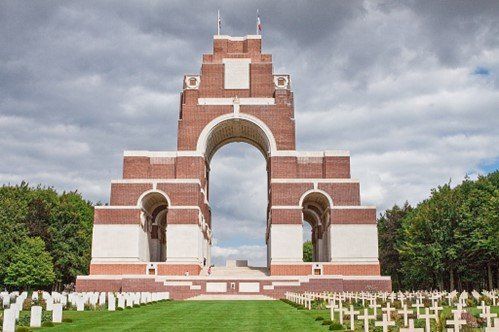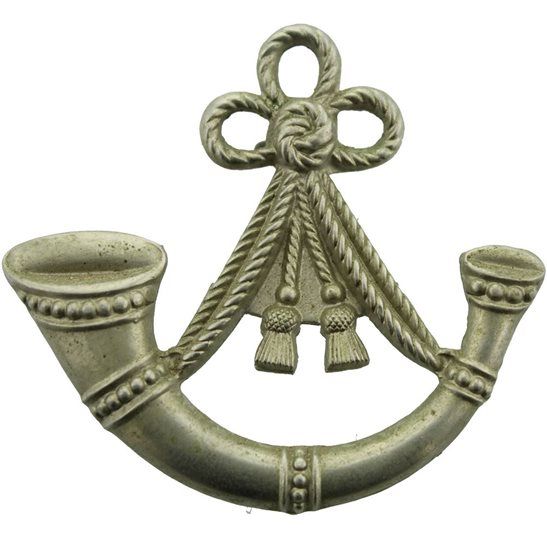In Memory of
JAMES WILLIAM BILES
Born: 1892 Yarnton, Oxfordshire.
Son of Henry Thomas & Mary Biles of
Folly Cottages, Steventon.
Pre-war occupation: Farm Labourer
32754 Private James William Biles
6th Battalion, Oxfordshire & Bucks Light Infantry
Died: 7th October 1916 aged 24
Killed in Action – Battle of Le Transloy. Somme, France
REMEMBERED WITH HONOUR:
Thiepval Memorial
Departement de la Somme, Picardie, France.
Pier and Face 10 A and 10 D.

COMMEMORATED IN PERPETUITY BY THE
Commonwealth War Graves Commission
The 6th (Service) Battalion of the Oxon & Bucks Light Infantry was formed at Oxford, in Sept 1914, as part of Kitchener's Second New Army (K2) and then moved to Aldershot to join the 60th Brigade of the 20th Division. In March 1915 they moved to Larkhill, Salisbury Plain for fitting out & training. Finally on 22 July 1915 they were mobilised for war and landed at Boulogne. After a short period of trench familiarisation and training, they engaged in various actions on the Western front. The battalion provided working parties for the maintenance and repair of trenches and the winter of 1915-16 was spent in the mud and waterlogged trenches around Ypres. The great Somme offensive began on the 1 July 1916, The 6th Battalion joined the battle on 25 July and by the end of August were embroiled in the fight to capture Guillemont and establish control of the Wedge Wood Road, Ginchy. The 20th Division finally consolidated and held the position until relieved on 5 September. After a brief respite the battalion returned to the trenches north of Trones Wood and prepared for a further attack on the German front line. The main attack on the line of Le Transloy - Thilloy - Warlencroft - Faucourt, by XIVth Corps of the Forth Army, was to take place on 10 October. The reserve divisions, including the 20th, were to establish a forward line (known as the Brown Line). Zero hour was 1.45pm on the 7th October. 6 Battalion's objective was to capture and hold 'Rainbow' trench and then move on to 'Cloudy' trench - the German trenches had been given meteorological code names. The advance to the first German line was held up by machine gun fire and the continuous length of the enemy's barbed wire, standing some 3 feet high, was also proving an obstacle. This was eventually overcome by crawling through or by standing on the top strands and the Battalion managed to get into Rainbow trench and force the Germans out. The battalion diary reports 'The German machine-gun fire was intense but was silenced. The Germans left their trench and ran back towards their second line. During their retreat the battalion's Lewis guns did considerable damage to them: large numbers were seen to fall, and few Germans got back, those remaining in their front line being bayoneted or captured.' The push on to the second line was accomplished with little loss except from sniper fire which took advantage that, for a time, there was no one on extreme right of the advance.
Total casualties were 13 Officers and 230 Other Ranks.
It is very likely that Private James William Biles was amongst the 230.
The Thiepval Memorial, the Memorial to the Missing of the Somme, bears the names of more than 73,000 officers and men of the United Kingdom and South African forces who died in the Somme sector before 20 March 1918 and have no known grave. Over 90% of those commemorated died between July and November 1916.
James William was the Son of Cowman Henry Thomas and Mary Biles.
Although born in Yarnton, Oxfordshire, James's parents moved to High Street, Drayton and then Folly Cottages, Steventon, Berks.
James also worked as a Farm Labourer before enlisting to the Oxfordshire & Bucks Light Infantry.
Next - A E Broad
